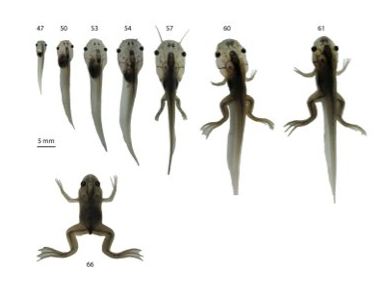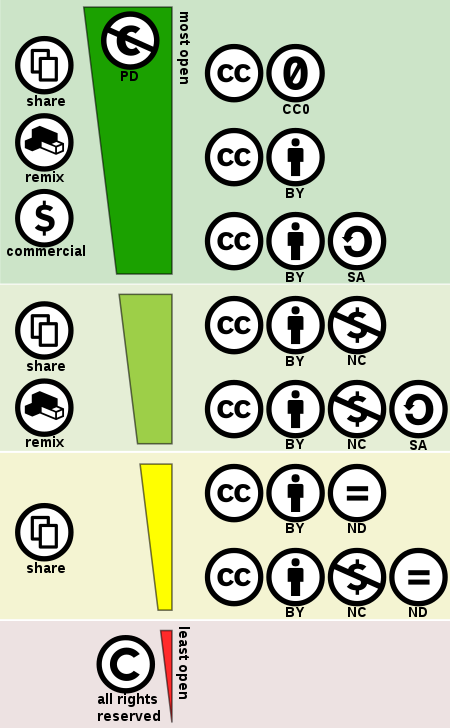Copyright and Creative Commons
Katya Henry; Rani McLennan; and David Cohen

Getting Started
What is copyright?
Copyright is the automatic legal protection given to all original work which we create in a material form.
Copyright gives you the exclusive rights to copy, communicate, use and adapt your work. In Australia, copyright law is governed by the Copyright Act (1968). It’s important to note that copyright law might differ from country to country.
Copyright applies as soon as a work has been put into a material form, such as being written down or recorded in some way. Copyright generally lasts for 70 years after the creator’s death. Once copyright has expired, a work enters the public domain, which means you can use it however you like.
Who owns copyright?
Generally the author or creator of a work owns the copyright in that work. But this is not always the case.
At QUT students own their Intellectual Property and the copyright in any work they produce. This includes any assessment items, including theses.
For staff, QUT as an employer owns all intellectual property (including copyright) created by staff in the course of their employment.
See D/3.1 Intellectual Property Policy
A copyright owner can also transfer their copyright to another owner, such as when signing a publishing agreement for a journal article, thus transferring copyright to a publisher.
For more information on copyright and your data, see the chapter on Licensing Research Data.
Exercise:
HOW TO USE COPYRIGHT MATERIAL
There are a number of ways to use others' copyright material legally.
- Permission
- Licence
- Exceptions
The Copyright Act provides an exception which allows you to use copyright material for specific purposes without the need for permission. This is called the Fair Dealing Exception. These purposes include Fair Dealing for:
- Research or study
- Criticism or review
- Parody or satire
- Reporting news
- Provision of legal advice
- Enabling a person with a disability to access the material.
A person can rely on a fair dealing exception only for their own use of copyright material. For example, it would not be regarded as fair dealing for criticism or review to reproduce a photograph and invite other people to critique it. The criticism or review should be by the person making the reproduction.
LEARN MORE
PUBLISHING
As the author of the work you have some degree of control in what rights you retain and assign to the publisher. A publishing agreement may involve granting the publisher a licence to publish or an assignment of copyright (which means the publisher owns the copyright in the work). This agreement will define the rights (if any) which are retained by you as the author. This is why it is very important to read the publisher’s agreement and understand what the publisher is requesting you assign in terms of your copyright.
3 Tips for Publishing Agreements
-
- Read the agreement.
- Negotiate.
- Keep a copy of the agreement.
Licensing
Licensing is the mechanism that allows you to share your work for reuse.
As the copyright owner you can put an open licence, such as a Creative Commons (CC) licence, on your work which will let others know how they can use it. A Creative Commons licence communicates how others can copy, communicate, use or adapt your work. This removes any uncertainty about how your work can and can't be used. [See Challenge Me below for more details about Creative Commons licensing.]
IMAGES
Consider publishing your images and figures under a Creative Commons licence prior to submitting your article for publication.
This will allow you to re-use these works in future publications.

(Hanzi, S. (2016). How to legally re-use your own figures)
This image of the stages of a tadpole comes from Sara Hanzi and Hans Straka. Sara and Hans published their image on Figshare under a Creative Commons Attribution Licence. Most importantly, they published the image before they submitted their article for publication in a journal. They simply cited themselves in the paper.
Watch this short video [5:37] to understand the copyright associated with images in your research publications.
CHALLENGE ME
CREATIVE COMMONS
Unlike the traditional ‘All rights reserved’ copyright model, a Creative Commons licence enables you to stipulate precisely how your work can be used. A CC licence enables others to copy and reuse your work without having to seek permission, as this has been granted in advance by virtue of the licence.
There are four elements to a CC licence.
| Attribution (BY) You allow others to copy, modify, and distribute your work, but they must credit you, the original creator. | |
| NonCommercial (NC) You allow others to copy, modify, and distribute your work, but for non-commercial purposes only. | |
| NoDerivatives (ND) You allow others to copy and distribute your work, but only in its original form, not modified (derivative) versions. | |
| ShareAlike (SA) You allow others to distribute derivative works, but only under a licence identical to that which you have applied to the original work. |
As the creator of a work, you will include some or all of these elements in your licence, depending on the nature of the work. You may, for example, impose the single, standard condition that you be credited as the original creator (Attribution) when the work is reused: CC BY. You may, additionally, stipulate that others can reuse your work for any purpose, even commercially, but not share it in a modified form (NoDerivatives): CC BY ND. These and other licence types are indicated below, from the most open (fewest restrictions) to the least open.

There is, in addition to the six standard CC licences, a public dedication tool (CC0) which enables creators to relinquish their copyright and release their work into the worldwide public domain with no restrictions. Organisations that provide access to digital works using CC0 include figshare, Europeana, and the Metropolitan Museum of Art.

Consider: What is the difference between CC0 and the Public Domain Mark (PD) shown above?
Read me:
-
-
-
- Denise Rosemary Nicholson's article, "How Creative Commons works, and why it enables access to knowledge", outlines the benefits of CC licences.
-
-
-
-
-
- Team Open features case studies of creators who have shared their intellectual property using CC licences.
- CC licences are widely used to share scientific research and data, as these science resources illustrate.
-
-

Exercise: You have written a book that you wish to publish in its entirety under a CC licence, but you want to ensure that you are credited as the original creator, and that nobody distributes your book for commercial purposes. Use the Creative Commons Licence tool to determine the most suitable licence type.
Want to learn more about Creative Commons? The Creative Commons Certificate is an intensive course for those seeking a deeper level of engagement with openly licensed works.
Attribution
Content in this chapter has been developed by QUT Library.
All information correct at time of publication, 14 February 2022.
Images
Royalty-free images used on this page were sourced from pixabay.com.
Icons created by priyanka and Wichai Wi from Noun Project.

